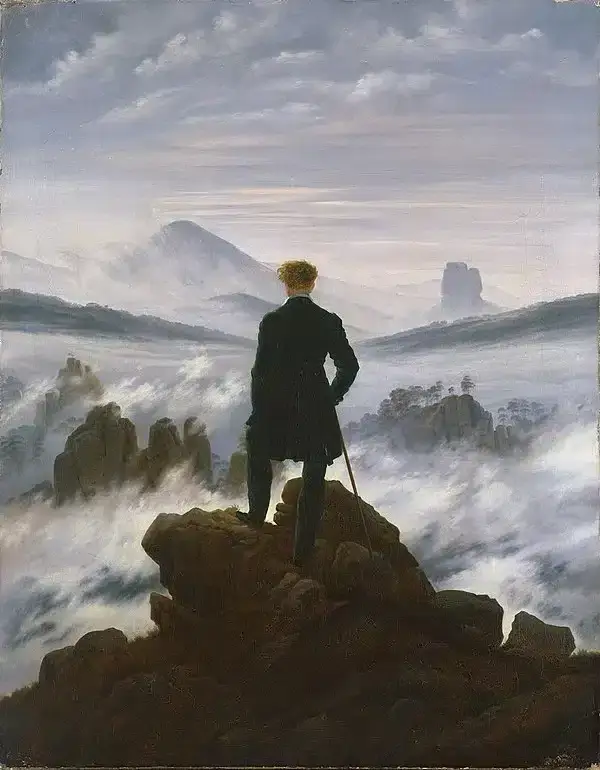Great Art Explained: Wanderer Above The Sea Of Fog
By Caspar David Friedrich

His breakout early work, “The Cross in the Mountains” caused controversy in religious and art circles due to its unusual composition and lack of traditional perspective. But Friedrich’s generation felt landscape painting could convey ideas just as well as figure painting. He was committed to imbuing the natural world with spiritual meaning.
What united the German Romantics was a focus on the individual’s emotional experience and seeking the infinite in nature. Friedrich’s unstable childhood, losing family members to drowning and disease, likely informed his solitary, contemplative and often melancholy aesthetic.
The Sublime Visions Of Caspar David Friedrich
German Romantic artist Caspar David Friedrich expanded the possibilities of landscape painting, imbuing it with symbolic meaning and a spiritual resonance. His landscapes evoke feelings of infinity, solitude and the sublime.
Friedrich came from a religious family and was deeply influenced by Lutheran theology. The concept of the “inner eye” – seeing with imagination rather than observation – shaped his radical approach to landscapes. Sparse studios, monk-like dedication to his art and a hermitic lifestyle all allowed Friedrich to focus inward and channel what he saw as divine inspiration.
This manifests in moody, atmospheric scenes that are more concerned with emotion than factual recreation. Figures are often backturned, inviting the viewer into the work rather than presenting a view to be seen. Fog, low horizons and central voids give his work an otherworldly quality. We seem to float in Friedrich’s scenes, unmoored from reality.



His breakout early work, “The Cross in the Mountains” caused controversy in religious and art circles due to its unusual composition and lack of traditional perspective. But Friedrich’s generation felt landscape painting could convey ideas just as well as figure painting. He was committed to imbuing the natural world with spiritual meaning.
What united the German Romantics was a focus on the individual’s emotional experience and seeking the infinite in nature. Friedrich’s unstable childhood, losing family members to drowning and disease, likely informed his solitary, contemplative and often melancholy aesthetic.
He strove to evoke the feeling of the sublime – of awe in the face of nature’s grandeur and one’s insignificance within it. Masterpieces like “The Sea of Ice” and the famous “Wanderer Above the Sea of Fog” perfectly encapsulate this style. Lone wanderers gaze out from perilous vantages, the infinite before them. We connect emotionally to these Rückenfiguren, inhabiting their perspective.
Over his life, Friedrich’s fortunes gradually declined as his eccentricities caused issues with patrons. Depression and later paralysis ended his prolific career. But today his unique vision places him as a pivotal figure in German Romanticism. Friedrich took landscape painting into bold new emotional and symbolic territory that influenced artists long after his death.
